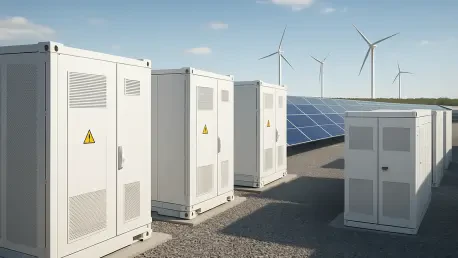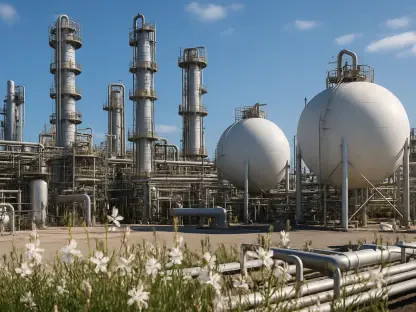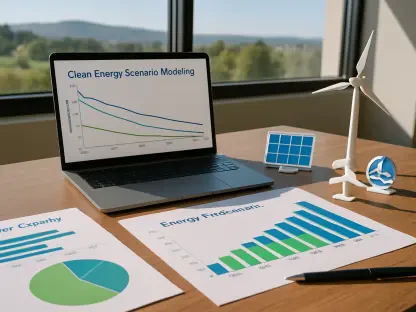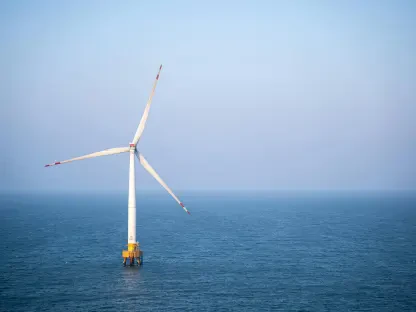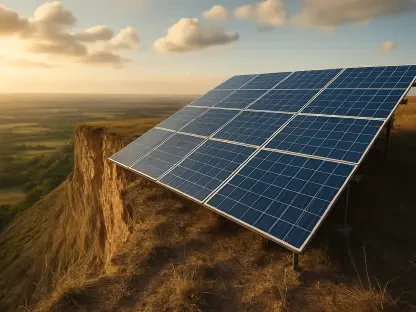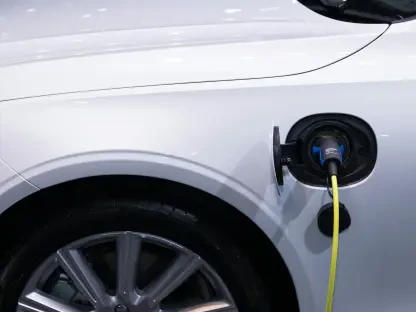The US energy storage market stands at a critical juncture, with deployments soaring to unprecedented levels amid a global push for cleaner, more reliable energy grids, positioning it as a linchpin of the renewable energy transition. Energy storage capacity is not just a technical necessity but a strategic asset for national energy security. With global projections estimating massive growth, the question looms: can the US maintain its momentum in the face of policy shifts, supply chain bottlenecks, and international competition? This roundup gathers insights, opinions, and analyses from a variety of industry perspectives to assess the resilience of the US energy storage sector, exploring growth trends, challenges, and strategic responses shaping its trajectory.
Unpacking the Surge in US Energy Storage: Why It Matters Today
The rapid ascent of energy storage technology has positioned it as a cornerstone of the US clean energy landscape. Essential for integrating intermittent renewable sources like solar and wind into the grid, storage systems ensure stability by balancing supply and demand. Industry observers note that without robust storage solutions, the transition to a decarbonized energy system risks stalling, underscoring the sector’s pivotal role in meeting climate targets.
Beyond technical merits, the urgency to evaluate market resilience stems from a volatile backdrop of policy uncertainties, trade disputes, and global rivalries. Analysts across the board stress that disruptions in any of these areas could jeopardize energy security and slow progress toward sustainability goals. The stakes are high, as storage is not just about power but also about economic and environmental stability.
This compilation of insights aims to navigate through the sector’s explosive growth forecasts, the impact of fluctuating policies, supply chain hurdles, and emerging global opportunities. By synthesizing diverse viewpoints, the discussion sheds light on whether the US can sustain its upward trajectory amid these multifaceted challenges.
Navigating the Complexities of a Booming Energy Storage Landscape
Explosive Growth Projections and Implications for the US
Current forecasts paint a staggering picture of energy storage expansion, with global additions expected to reach significant milestones in the coming years. Reports from industry trackers suggest that worldwide capacity could see a twelvefold increase by 2034, with the US playing a substantial role in this surge. Such projections highlight a consensus among analysts that storage is no longer a niche but a mainstream component of energy infrastructure.
Further data from market research indicates a notable uptick in US deployment expectations, with an additional 4 gigawatts anticipated in the near term. Many industry watchers attribute this optimism to technological advancements and increasing demand for grid reliability. However, there’s a shared concern that this growth could be tempered by external shocks, such as sudden policy changes or interruptions in global trade flows.
Balancing this optimism with caution, several experts point to the fragility of rapid expansion. While the numbers inspire confidence, there’s an acknowledgment that unforeseen reversals, whether from domestic regulations or international disruptions, could alter the outlook. This duality of promise and peril forms a recurring theme in discussions about the sector’s future in the US.
Policy Turbulence and the US Market’s Adaptive Response
The policy environment surrounding US energy storage has been a rollercoaster, marked by threats of tariffs and budget uncertainties under the current administration. Early moves to impose trade penalties on key imports raised alarms among stakeholders, with fears that such measures could inflate costs and delay projects. Yet, a mid-year budget resolution preserving tax credits for storage through the next decade offered a much-needed reprieve.
Market participants have shown remarkable adaptability in response to these shifts, recalibrating business strategies to align with the evolving regulatory landscape. Legal and financial advisors in the sector emphasize that while the policy framework isn’t perfect, the continuity of incentives has bolstered confidence, enabling companies to plan long-term investments with greater certainty.
Still, lingering ambiguity poses risks, as some analysts warn that inconsistent signals from policymakers could dampen innovation or deter new entrants. On the flip side, this uncertainty has spurred creative solutions, with firms exploring alternative funding models and lobbying for clearer guidelines. The consensus leans toward cautious optimism, viewing these challenges as catalysts for a more resilient industry.
Supply Chain Struggles and the Push for Domestic Strength
A pressing concern for the US energy storage market is the impending restriction on foreign-sourced battery components, set to tighten in the coming years. Heavy reliance on overseas suppliers, particularly for critical materials, has left the industry vulnerable, prompting a race to complete projects before deadlines. Many in the field argue that this dependency exposes a structural weakness that must be addressed urgently.
Regional initiatives to enhance domestic capacity offer a glimmer of hope, with significant investments in manufacturing facilities across the country. Examples like a major plant in Michigan ramping up production of stationary storage systems reflect a broader trend of localization in recent years. Industry voices highlight that such efforts, while promising, require time and sustained funding to scale effectively.
Contrary to fears that supply chain issues will cripple progress, a growing number of stakeholders see these hurdles as an opportunity to diversify and strengthen the market’s foundation. Investments in alternative sourcing and partnerships with allied nations are gaining traction as viable strategies. This perspective suggests that while challenges are real, they could ultimately fortify the US position through innovation and self-reliance.
Global Demand Dynamics and Ripple Effects on the US
Looking beyond domestic borders, global demand for energy storage is surging, particularly in emerging economies across Asia, Latin America, and beyond. Countries like India and Brazil are witnessing robust growth driven by utility-scale projects and government-backed procurement programs. Analysts note that this trend reflects a universal recognition of storage as vital to modern energy systems.
This diversification of markets presents both competition and collaboration potential for US stakeholders. While some industry perspectives warn of increased rivalry for resources and talent, others see an opening to export expertise and technology to these growing regions. The debate centers on whether global expansion will strain or support US ambitions in the sector.
A forward-looking question among experts is whether the US can capitalize on these international shifts to cement its leadership. Speculation abounds that strategic alliances and knowledge-sharing could position American firms as key players in a more interconnected market. This global lens adds a layer of complexity but also opportunity to the resilience narrative.
Key Lessons from the US Energy Storage Boom
Synthesizing the diverse opinions reveals a sector defined by impressive growth, with projections signaling a transformative decade ahead. The stabilization of key policies, despite early turbulence, has provided a foundation for confidence, as noted by various industry analyses. Meanwhile, supply chain constraints and global market dynamics remain focal points of concern and discussion.
For stakeholders, actionable strategies include accelerating the build-out of domestic manufacturing to reduce foreign dependencies. Advocacy for consistent, transparent policies is another recurring recommendation, ensuring that regulatory frameworks support rather than hinder progress. Additionally, fostering international partnerships emerges as a way to navigate competitive pressures while expanding market reach.
Practical takeaways for those engaged in the sector include keeping a close eye on regulatory developments that could shift project timelines or costs. Exploring investment in cutting-edge storage technologies also surfaces as a promising avenue, with many suggesting that innovation will be key to staying ahead. These insights aim to equip participants with tools to thrive in a rapidly evolving landscape.
The Road Ahead for US Energy Storage Resilience
Reflecting on the insights gathered, it became clear that the US energy storage sector has demonstrated notable endurance in navigating adversity. Despite unresolved challenges like supply chain dependencies, the capacity to adapt and grow stood out as a defining trait across various analyses. The discussions underscored a market that, while tested, has proven its potential to thrive under pressure.
Looking back, the significance of energy storage as a backbone for renewable integration and grid reliability has never been more evident. Moving forward, a focus on reducing vulnerabilities through localized production emerged as a critical next step. Stakeholders were encouraged to prioritize investments in alternative supply networks to safeguard against future disruptions.
Another actionable consideration that surfaced was the need to deepen global collaborations, leveraging international demand to bolster US innovation. As the clean energy race has intensified, the question of whether the US can lead by balancing ingenuity with adaptability lingered as a guiding challenge. This reflection aims to inspire strategic action and sustained curiosity in shaping a resilient energy future.
